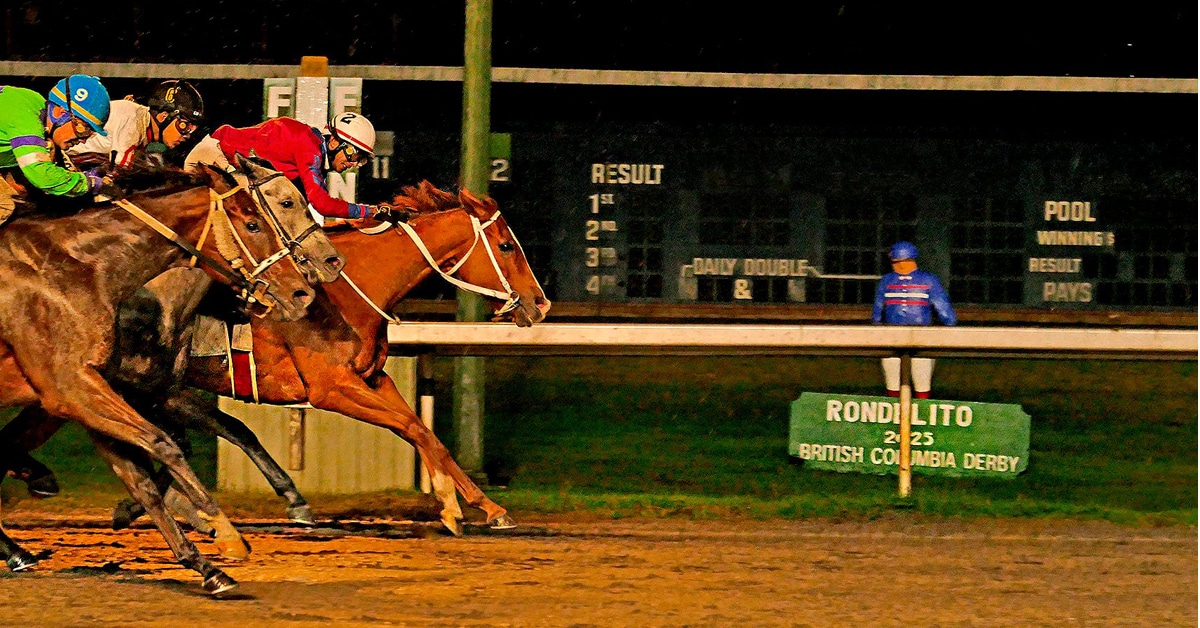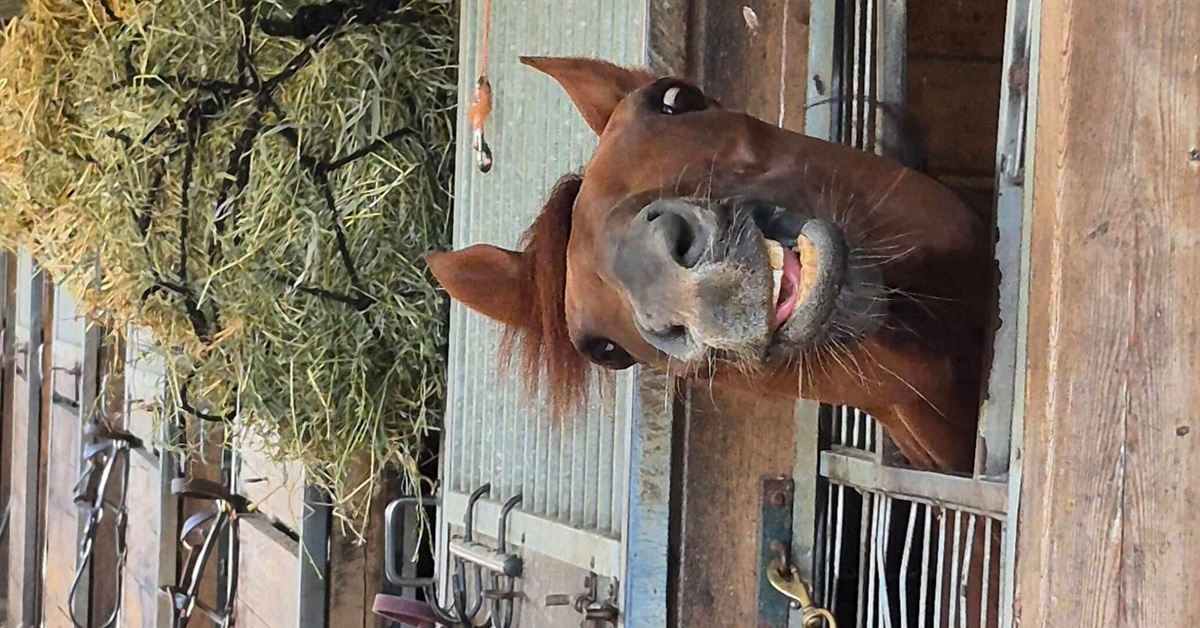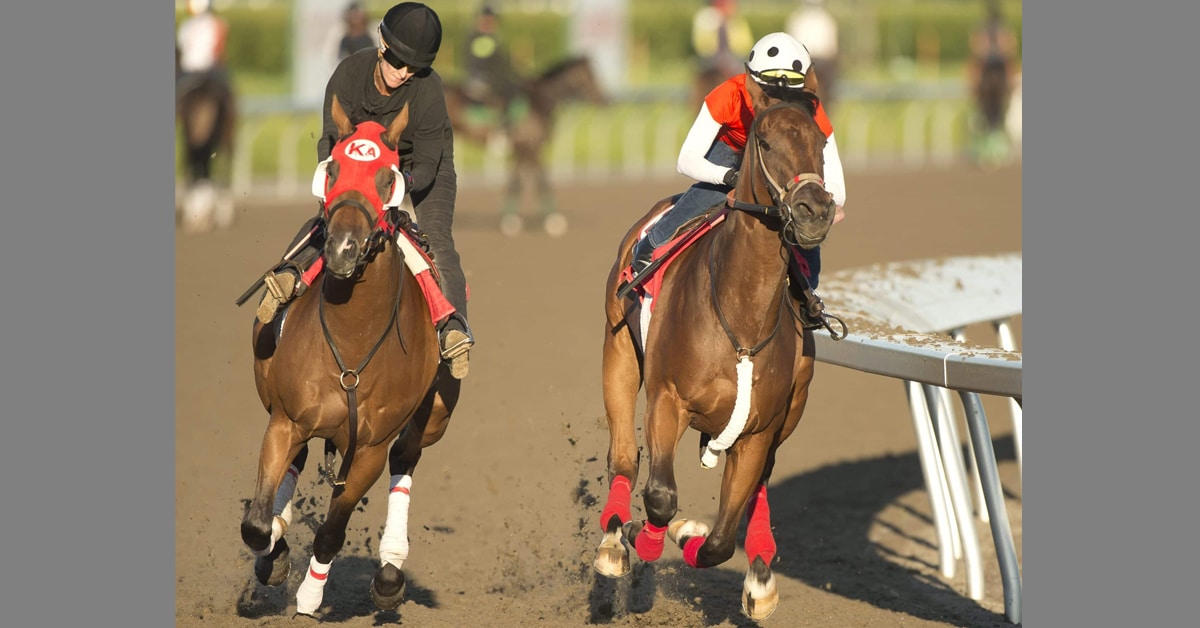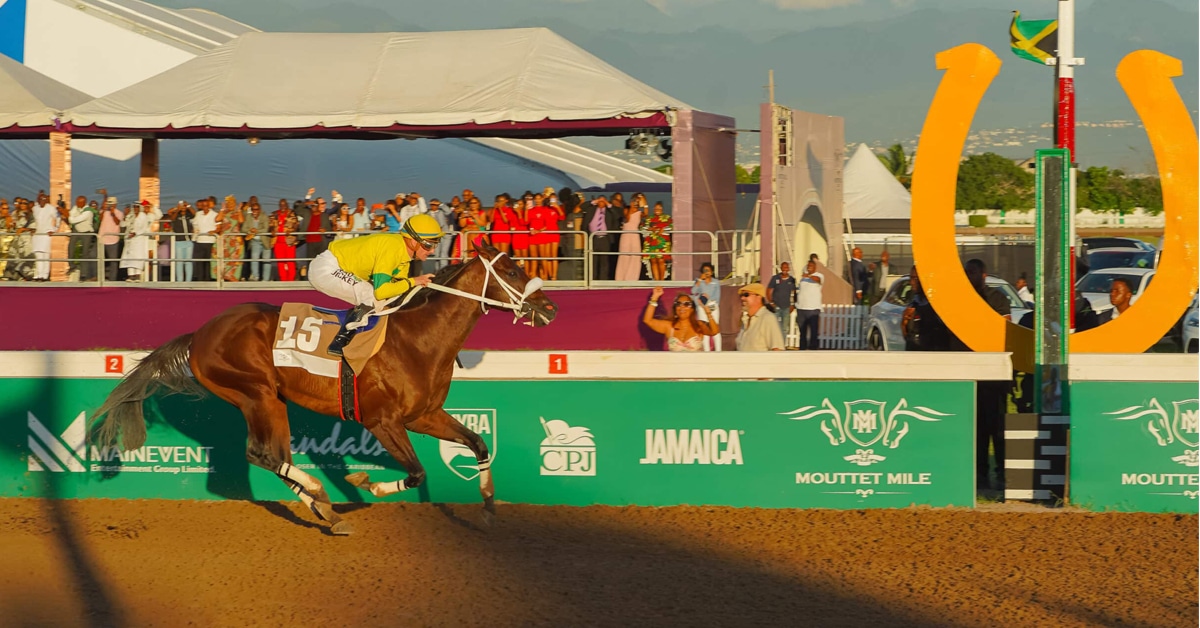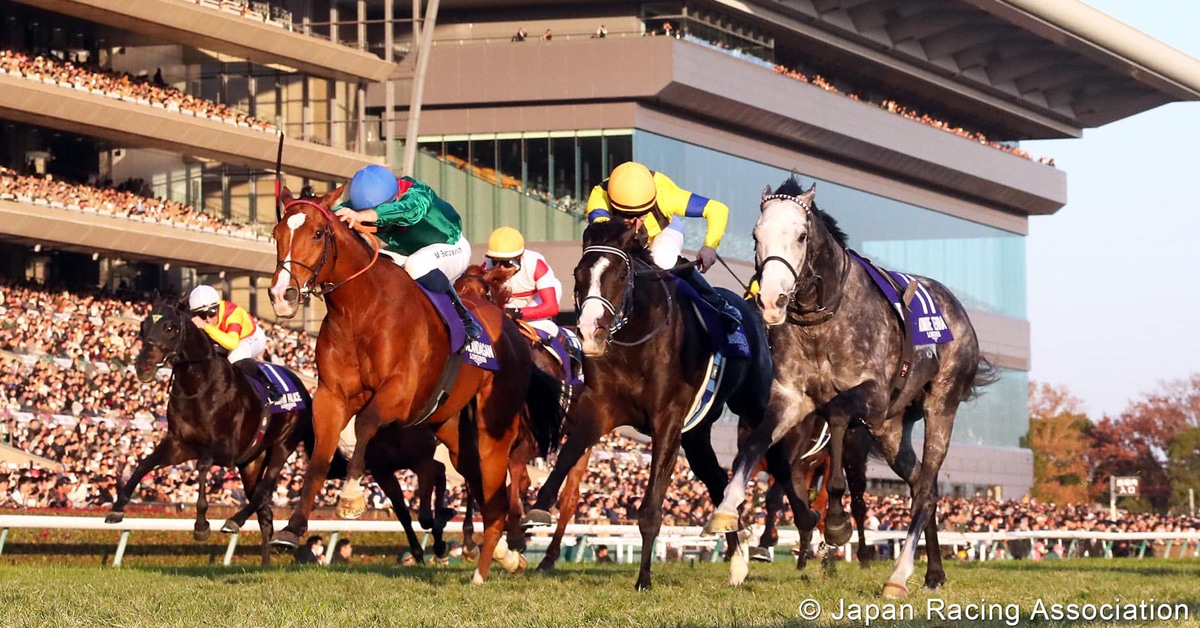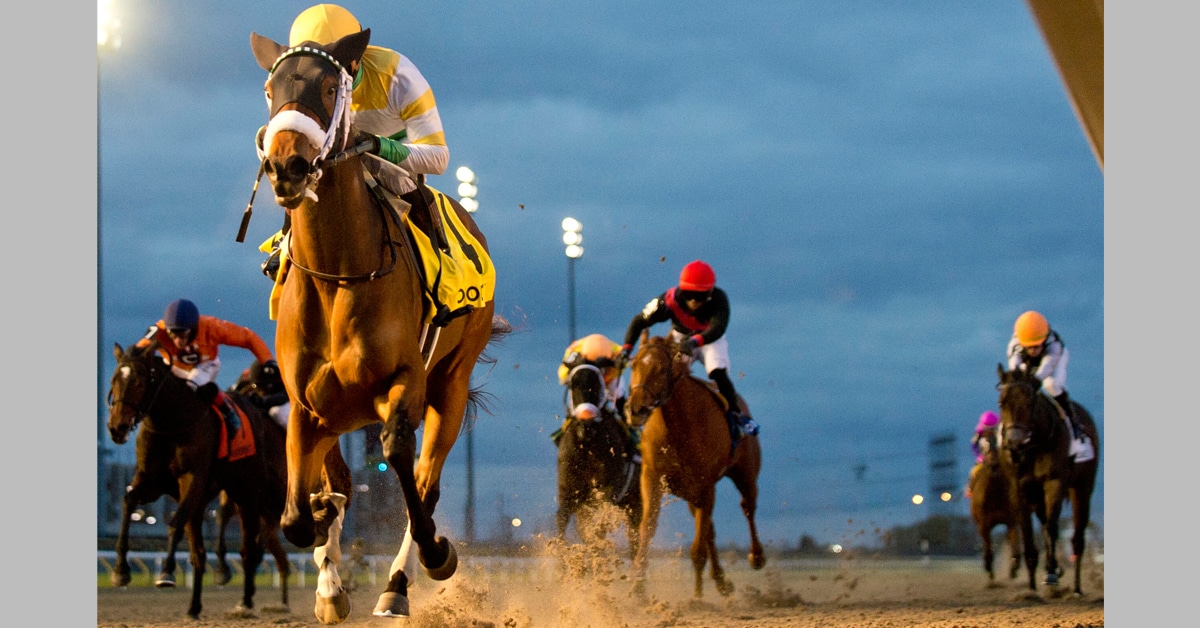The 2016 Ontario Horse Racing Industry Survey results are in.
Equine Guelph, who developed and administered the survey, called upon grooms, trainers, owners and other stakeholders in the racing industry to provide input on racehorse health and well-being. The results will be used to direct future research, education/training programs and outreach efforts to maintain and improve racehorse health and well-being in Ontario.
The goal was to learn more about the current challenges facing the Ontario horse racing industry in all three sectors – Standardbred, Thoroughbred and Quarter Horse. More specifically, it explored: current racehorse health concerns (injuries and diseases of most concern), horsemanship and racehorse well-being including post racing opportunities, communications and training.
The survey consisted 66 questions and contained special customized questions/sections that reflected differences between the Standardbred, Thoroughbred and Quarter Horse racing sectors. Overall, a total of up to 654 responses were received and analyzed further, with 381 (58.3% of responses being complete surveys. This report presents a condensed summary of the survey results. Following are some highlights from the report:
Respondent Demographics:
• There was proportional representation of the three racing sectors with 72%, 21% and 7% of respondents from the Standardbred, Thoroughbred and Quarter Horse sectors respectively.
• Standardbred had more male respondents (59%), while Thoroughbred had more female respondents (58%). Interestingly, the vast majority (74%) of Quarter Horse respondents were female.
• Owners represented the largest group of respondents across the sectors: Standardbred 29%, Thoroughbred 32%, Quarter Horse 32%.
General Industry Concerns:
• Nearly 60% of respondents reported sickness as the number one most common reason their horses perform poorly in races.
• Top three health issues of concern to the racehorse industry are: #1 respiratory issues, #2 injuries, #3 gut issues.
• Nearly ¾ of respondents (73%) ‘agreed’ or ‘strongly agreed’ that the industry would benefit from education/training opportunities for grooms.
• Over 70% of respondents agreed that the industry would benefit from education/training opportunities for both grooms and trainers.
• Overall 58% of respondents ‘agreed’ or ‘strongly agreed’ that “the general well-being of racehorses is excellent,” while another 26% of respondents felt neutral. Interestingly, responses to this question did not significantly differ by sector or other relevant demographic characteristics.
• All sectors ‘strongly agree’ that the racing industry doesn’t do enough marketing/promotion: Standardbred 62%, Thoroughbred 48% and Quarter Horse 33%.
• There is overall consensus (57% ) that the industry needs to be better prepared for emergencies.
Injuries:
• Generally, soft-tissue injuries appear to be most common form of injuries, with Standardbred and Thoroughbred sectors listing it as most common, and Quarter Horse respondents ranking it second overall.
• Overall, lower legs and knees appear to be the most common locations of injuries across all three sectors. Lower leg injuries were seen as most common among Standardbred and Thoroughbred respondents, and second most common among Quarter Horse respondents.
• Overall, track maintenance/conditioning, track surface and undetected lameness were viewed as some of the most important factors for increasing the risk of injuries.
Disease & Sickness:
• The top three diseases/sicknesses encounters across the sectors are: #1 Cold/virus/flu (99.3%), #2 Bleeding/EPM (32.2%), #3 Allergies (25.5%).
• Not sharing grooming supplies with people from other stables was the most commonly performed management practice for disease prevention while at the racetrack, with 59% of respondents reporting ‘always’ doing so, with another 16% doing this ‘most of the time’.
• Disinfecting stalls before use and/or disinfecting cross ties before use were the two most infrequently performed management practices, with 47% and 58% of respondents indicating they ‘never’ perform this practice.
• Having a vaccination program for diseases of concern was the most commonly performed management practice for disease prevention at respondents’ home stables, with 63% reporting that they ‘always’ perform this practice.
• Having dedicated equipment for each horse, daily monitoring of horse health and quarantining new horses were also fairly commonly performed, with 65%, 66% and 50% of respondents reporting they perform these ‘always’ or ‘most of the time’.
• Interestingly, some easy to implement practices, such as hand washing stations/use of hand sanitizer, staff training on disease prevention and disinfecting trailers were some of the most infrequently performed practices. No significant differences were observed by sector or relevant demographic characteristics.
• In the Standardbred sector 34% perform daily health checks compare to 49% in the Thoroughbred sector and 47% in the Quarter Horse sector.
Racehorse Well-Being:
• Overall, only 29% of respondents reported feeling that the public perception of the well-being of racehorses is ‘good’ or ‘very good’. While 29% reported feeling the public perception might be neutral, 42% of respondents viewed the public perception as being ‘poor’ or ‘very poor’. Importantly, responses to this question did not significantly differ by sector or other relevant demographic characteristics. Over 90% of respondents were concerned about the overall public perception of horse racing.
• The majority of respondents feel there should be more funding for options for retired racehorses (existing programs, retraining for second careers and adoption programs).
• Approximately 96% of respondents agreed that a retirement/re-homing program is a good solution.
• The top three areas of research which are deemed a priority by the respondents: injury prevention (34.8%), training (18.2%) and nutrition (9.1%).
Fire Prevention & Emergency Preparedness:
• Approximately 73% of respondents reported having an emergency kit for their stable/farm.
• In the Standardbred sector 46% of respondents said they have an emergency response plan for their stable/farm, compared to 66% in the Thoroughbred sector and 50% in the Quarter Horse sector.
• Only 50% of respondents in the Standardbred sector have an evacuation plan for their stable/farm, compared to 71% in the Thoroughbred sector and 48% in the Quarter Horse sector.
• Approximately 53% of respondents reported having received fire safety/prevention training in the past. Those with training on emergency protocols were significantly more likely to have an emergency response plan and an evacuation plan, therefore prior training has an impact on emergency preparedness.
Communication & Training:
• About 70% respondents would consider taking an online course to learn more about racehorse care and management.
• The majority of respondents acknowledged the importance of racing-related courses/programs with 60% reporting they are ‘important’ or ‘very important’ in helping them succeed. Course flexibility is a critical factor.
• The top three topics respondents would like to learn more about with respect to racehorse health and management are #1 injury prevention, #2 genetics and #3 conditioning programs/exercise physiology.
• Approximately 70% of respondents indicated they would favour a formal apprenticeship for grooms. Preferred months for courses were January and February.
• Over 70% of respondents support the concept of training programs linked to licensing for grooms and trainers.
More News
